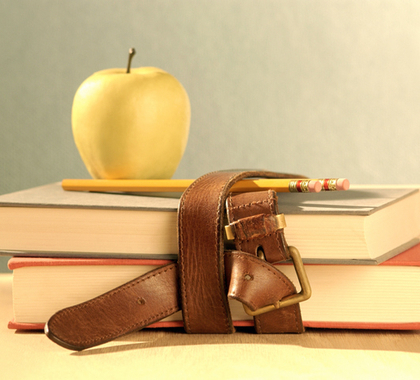A new report from the Thomas B. Fordham Institute finds that more than 5,000 public schools, nearly one in every 12 public schools across the country, have seen enrollment decline by a “substantial” amount since the COVID-19 pandemic and the forced closure of these schools for significant periods of time.
Further, public schools that are considered “chronically underperforming,” almost 500 of them in total, were twice as likely to experience substantial declines compared to the rest.
This backs up a previous analysis by the author of the Hamilton Project, released in October 2023, showing 9 percent of public elementary and middle schools saw a decline in enrollment of more than 20 percent from the 2018–19 to 2021–22 school years.
“There was a notable increase in the proportion of public schools experiencing sizable enrollment declines following the pandemic,” the Fordham report notes. “While less than 5 percent of schools experienced enrollment losses exceeding 20 percent between 2016–17 and 2019–20, this figure surged to approximately 8 percent in the period between 2019–20 and 2022–23…Previous analyses have shown that neither population change nor increases in charter or private school enrollment fully explain the enrollment losses experienced by traditional public schools during the pandemic, suggesting that many families have chosen to educate their children at home.”
These forced school closures during the COVID-19 pandemic and the repeated efforts by teacher unions to keep schools closed as long as they possibly could were the last straw for many parents. Multiple studies released in 2020 and 2021 showed public school districts with more powerful unions were less likely to re-open to in-person learning in 2020, even though in-person instruction was known to be perfectly safe. Now these parents are, essentially, voting with their feet.
The number of students participating in education choice programs, many of them newly enacted or newly expanded in response to union truculence during the pandemic, has skyrocketed since the pandemic, increasing by 92 percent since 2019. Participation in education savings account (ESA) programs has risen from around 35,000 students in 2019 to more than 470,000 students in 2024, while voucher program enrollment has risen over that same period from around 200,000 students to more than 323,000 students. Meanwhile, the number of children being homeschooled jumped from 2.8 percent of all students nationwide in 2019 to 5.4 percent in 2023.
Many other parents with children stuck in public schools would also like to make the jump to private schools or homeschooling, if they had the means to do so. Polling has found that while traditional public schools educate around 80 percent of children nationwide, only 44 percent of parents would choose a traditional public school as their first option. More than 30 percent of parents would choose a private school as their first option, but only around 9 percent of children are currently enrolled in one, and although homeschooling has seen a significant jump in popularity, the number of homeschoolers is significantly smaller than the 10 percent of parents who responded it would be their first choice for their children.
Unfortunately, only about 40 percent of students nationwide have access to an education choice program. Legislators should be looking for ways to get all families into the schools that they think best fit the unique needs of their children. States with education choice programs should seek to make these programs universal as quickly as possible. States without an education choice program should look to enact one of modest size, open to low-income families or children with special needs or those zoned to chronically underperforming schools, with the goal of incrementally expanding these programs in the years to come.
The goal of public education today and in the years to come should be to allow all parents to choose which schools their children attend, require every school to compete for every student who walks through its doors, and make sure every child has the opportunity to attend a quality school that best fits their unique needs and circumstances. There has not been a time when providing these opportunities has been more urgent and needed than right now.
The following documents provide more information about education choice.
The 123s of School Choice (2024 Edition)
https://www.edchoice.org/wp-content/uploads/2024/06/2024-123s-of-School-Choice.pdf
This report from EdChoice is an in-depth review of the available research on private school choice programs in America. Areas of study include: private school choice program participant test scores, program participant attainment, parent satisfaction, public school students’ test scores, civic values and practices, racial/ethnic integration and fiscal effects.
Fiscal Effects of School Choice
https://www.edchoice.org/wp-content/uploads/2021/11/Fiscal-Effects-of-School-Choice-Condensed.pdf
This EdChoice analysis of 40 private educational choice programs in 19 states plus D.C. summarizes the facts and evidence on the fiscal effects of educational choice programs across the United States and finds they have provided up to $28.3 billion in net fiscal savings to state and local taxpayers through Fiscal Year 2018. The programs in the analysis include three education savings accounts programs (ESAs), 19 school voucher programs, and 18 tax-credit scholarship programs.
The Public Benefit of Private Schooling: Test Scores Rise When There Is More of It
https://object.cato.org/sites/cato.org/files/pubs/pdf/pa830.pdf
This Policy Analysis from the Cato Institute examines the effect increased access to private schooling has had on international student test scores in 52 countries. The Cato researchers found that a 1 percentage point increase in the share of private school enrollment would lead to moderate increases in students’ math, reading, and science achievement.
The Effects of School Choice on Mental Health
https://papers.ssrn.com/sol3/papers.cfm?abstract_id=3272550
This study from Corey DeAngelis at the Cato Institute and Angela K. Dills of Western Carolina University empirically examines the relationship between school choice and mental health. It finds that states adopting broad-based voucher programs and charter schools witness declines in adolescent suicides and suggests that private schooling reduces the number of times individuals are seen for mental health issues.
Nothing in this Research & Commentary is intended to influence the passage of legislation, and it does not necessarily represent the views of The Heartland Institute. For further information on this subject, visit School Reform News, The Heartland Institute’s website, and PolicyBot, Heartland’s free online research database.
The Heartland Institute can send an expert to your state to testify or brief your caucus; host an event in your state; or send you further information on a topic. Please don’t hesitate to contact us if we can be of assistance! If you have any questions or comments, contact Heartland’s government relations department, at [email protected] or 312/377-4000.




